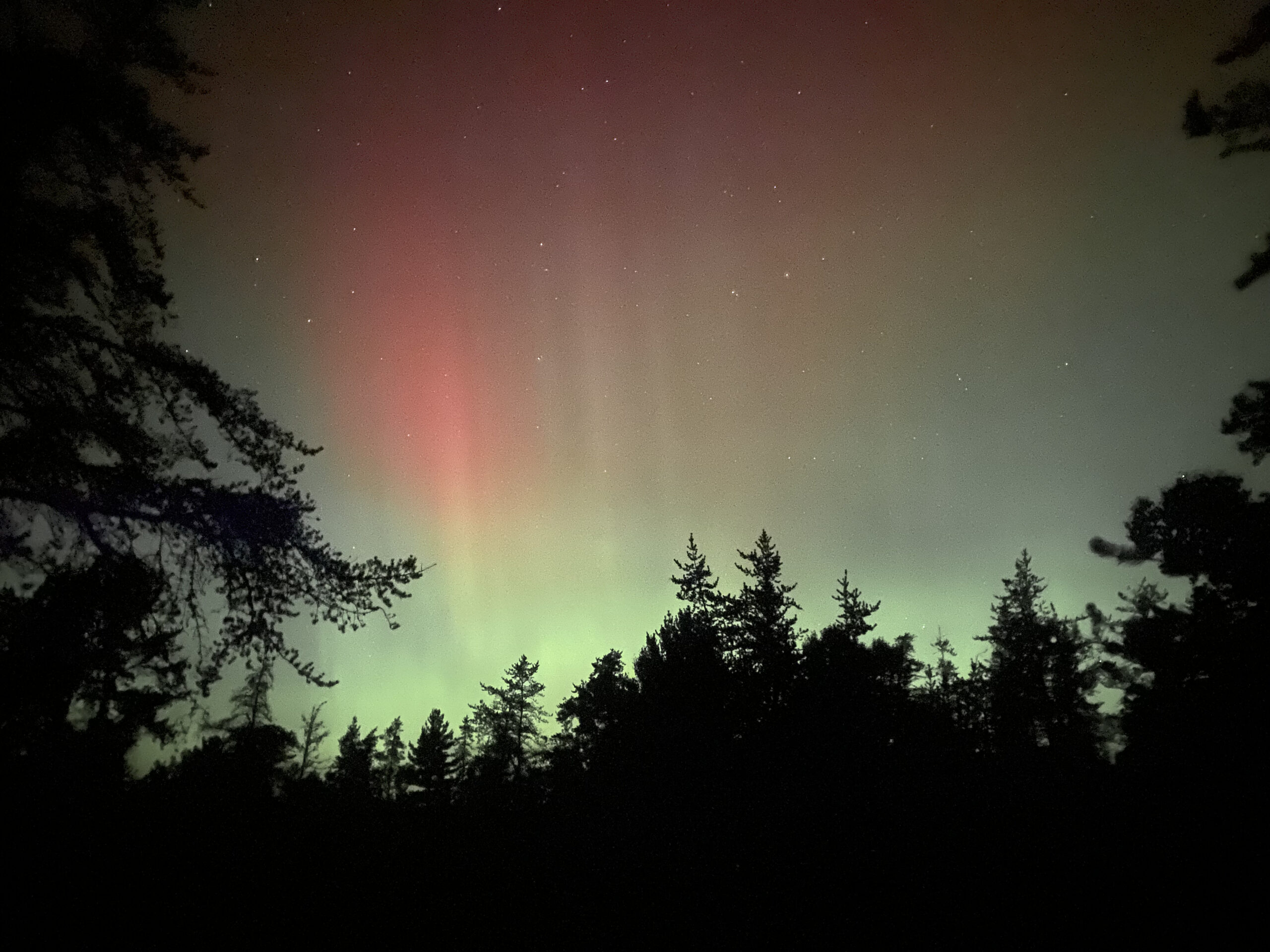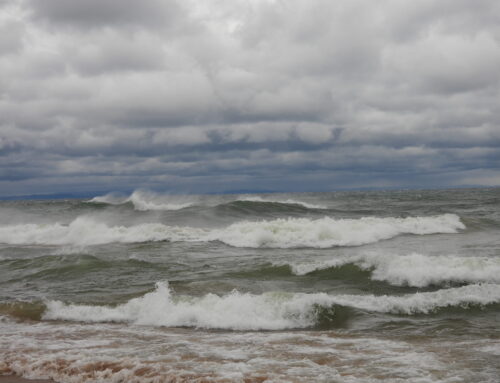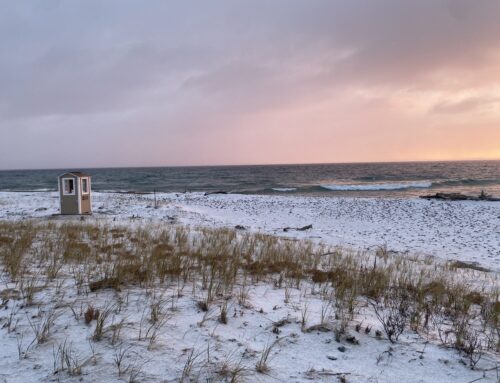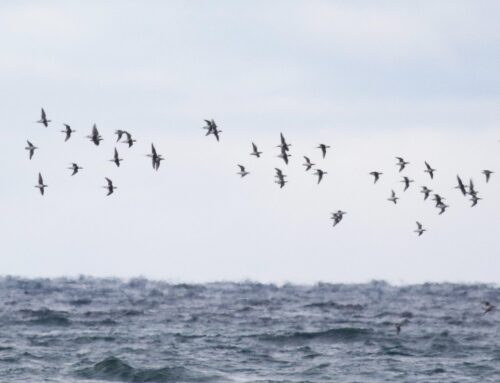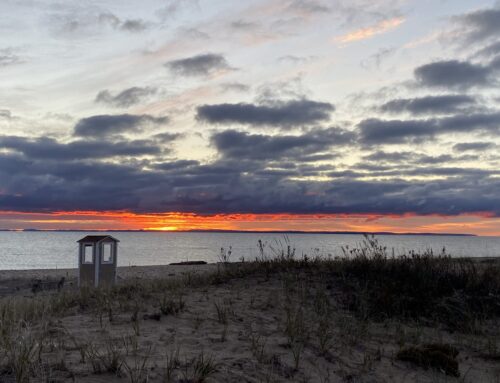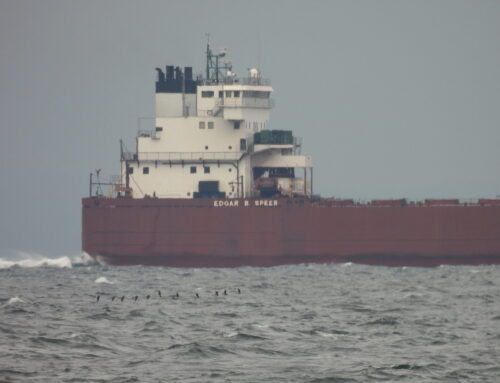Numbers are picking up at the waterbird count! We’ve had 18 species of ducks this week and multiple days with over a thousand individuals. The bulk of the birds have been Greater Scaup, Redhead, American Wigeon, and Northern Pintail. The composition of the duck flocks can change day to day, and often the birds are all mixed together in great big messy lines moving past the point. With October coming up fast and no north winds in the near forecast, it will be interesting to see when our first push of scoters arrives.
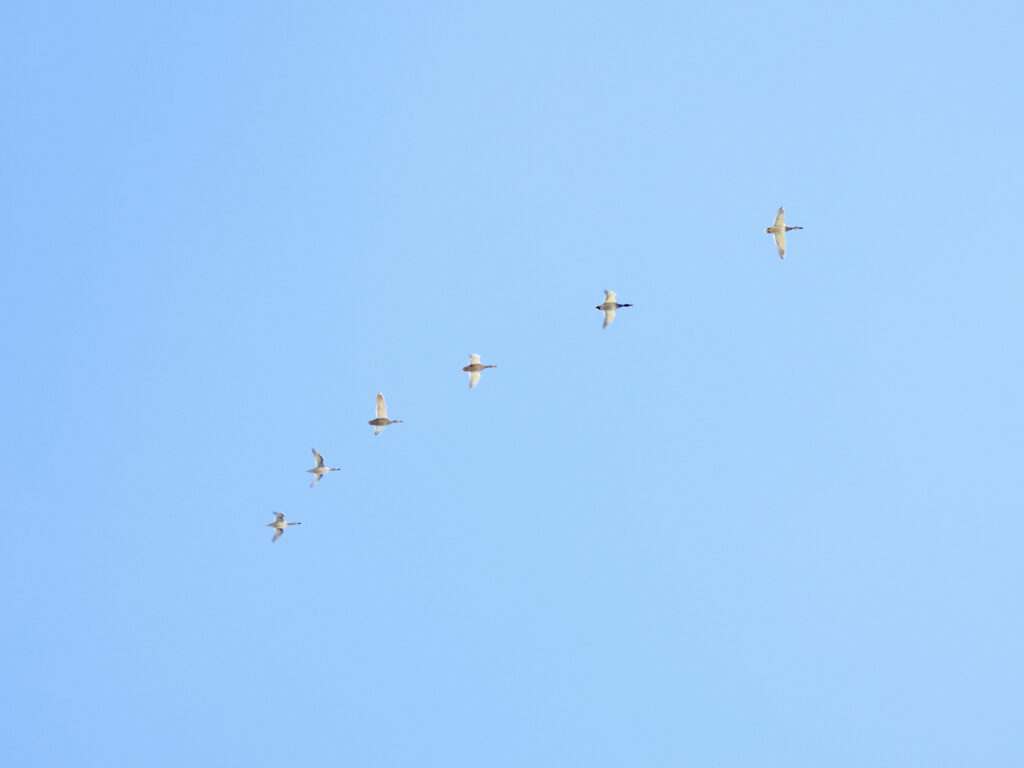
Flock with four Mallards and two Northern Pintails. Photo by Frank Fabbro
So far this season, east winds have produced the biggest Canada Goose flights for us. We’re getting later into the fall, and a few non-Canada Geese have started mixing in. Clay had a Cackling Goose mixed into a flyover flock on 9/28, and I had a single Snow Goose in a different flyby flock on 9/27. There were also two swans observed flying by on 9/30 that were too far to confirm Trumpeter or Tundra.
And just when we thought we were done, the grebes have had a second wave this week. It’s been nothing like the thousands we tallied earlier in the season, but there were a couple of modest flights with 200+ grebe days this week. At the end of the week, our season totals sit at an awesome 13,177 Red-necked Grebes and 214 Horned Grebes.
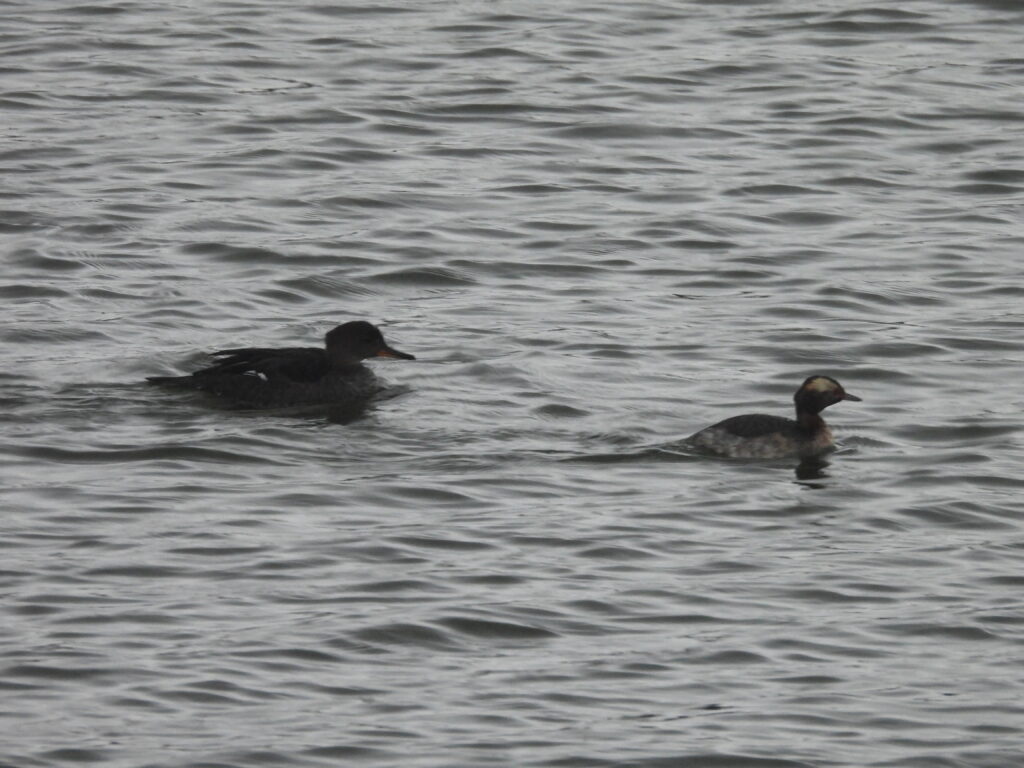
Hooded Merganser and Horned Grebe. Photo by Frank Fabbro
I speculated in my last blog about whether the loons would keep moving in such big numbers, and they definitely have not disappointed. My biggest Common Loon day thus far was on 9/26 with 488 birds flying past the count. What is more remarkable is that almost half of those birds came by in the span of just one hour. Scanning above the horizon would reveal loose and high-flying flocks of 10-15 loons. I could then turn around to see a similar number of birds cutting overland around the tip of the point.
It wasn’t just Common Loons on the move this week either. On the morning of 9/25, the point was completely socked in with fog for the first 4 hours of the count. With just a few hundred meters of visibility, I waited patiently at the count for conditions to improve. The fog seemed to confuse lots of songbird migrants with the flight calls of Gray-cheeked Thrushes ringing out overhead and Rusty Blackbirds, a Bohemian Waxwing, and our first European Starling of the season all materializing out of the gray sky. Once the fog lifted enough to see the water, I could see Red-throated Loons winging past at close range. In the period after the fog lifted, I tallied 107 Red-throated Loons migrating by.
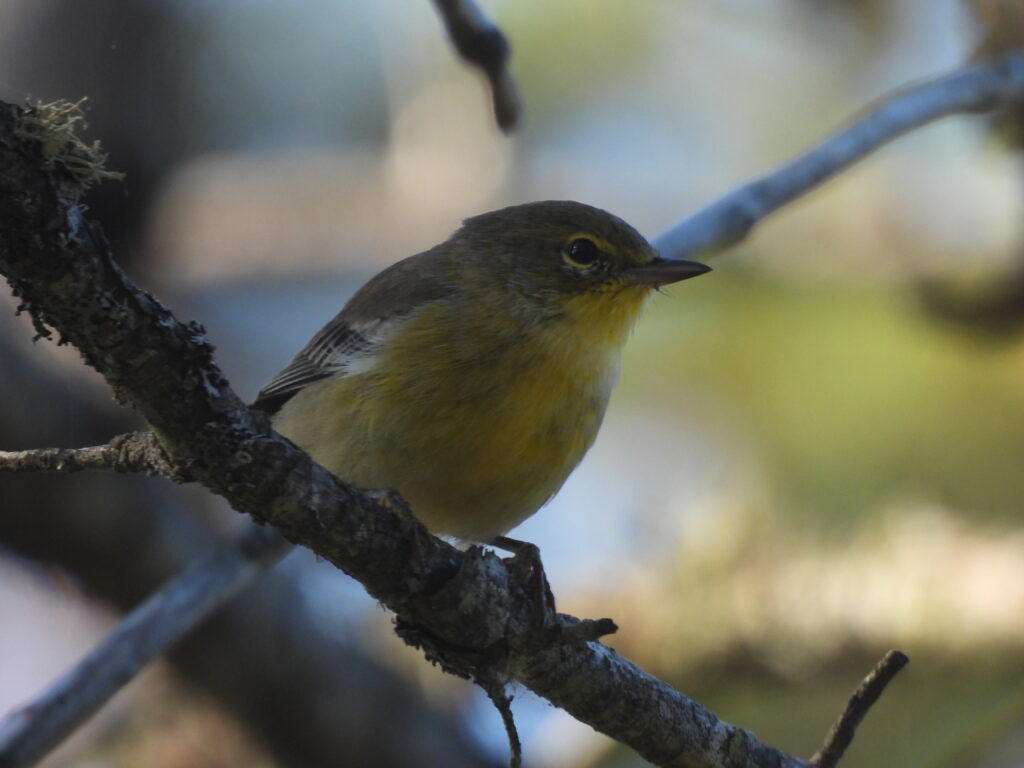
Pine Warbler. Photo by Frank Fabbro
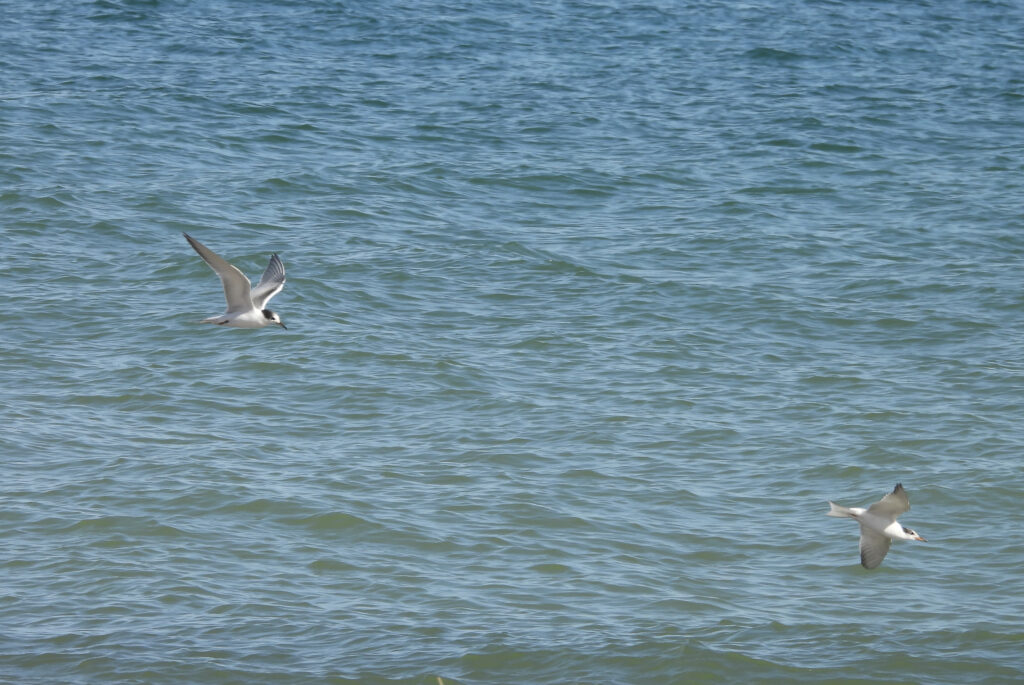
A pair of Common Terns. Photo by Frank Fabbro
We’re also still seeing a jaeger almost every day on the count, with a lovely adult Parasitic flying past on 9/25. Another seabird was enjoying Lake Superior at the count on 9/30 when our second juvenile Sabine’s Gull of the season flew by!
We had one bit of non-waterbird excitement on 9/26 when a Short-eared Owl was spotted flying in over the lake. A group of us got to see its distinct deep bounding wingbeats as it circled its way towards land and disappeared.
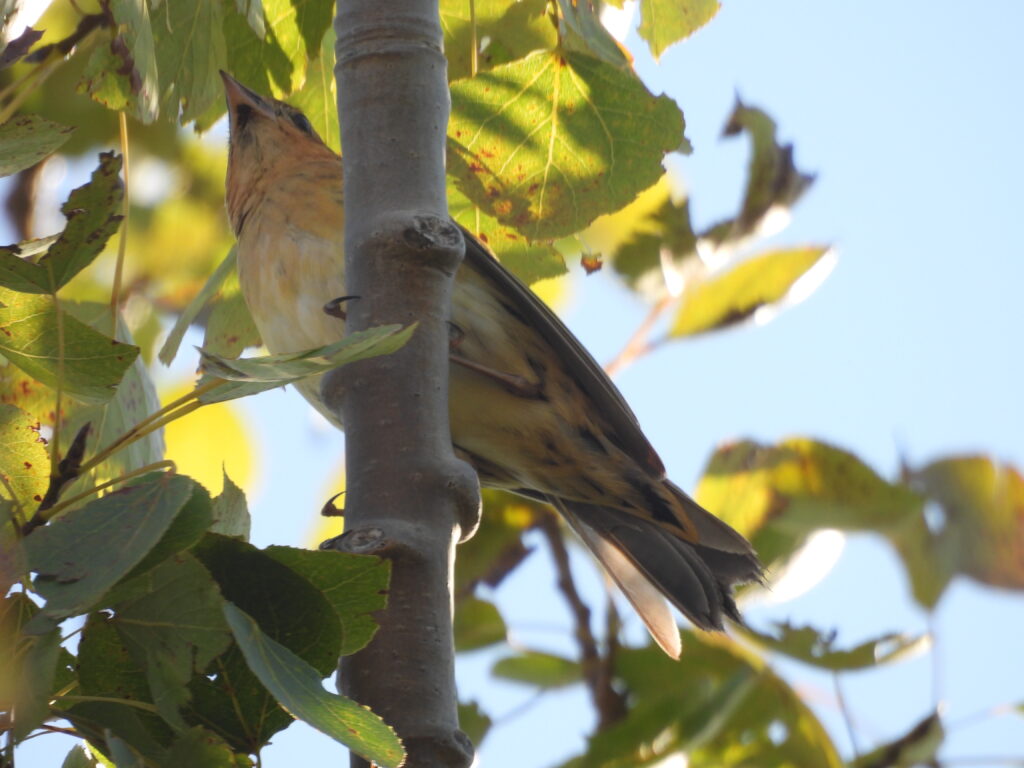
A Bobolink that flew by the count and later hung around the feeders for the afternoon. Photo by Frank Fabbro
The weather forecasts are calling for clear skies with lots more South and Southeast winds in the coming week. This week has shown that even with some southerly winds the waterbirds can sometimes move. October is prime time at Whitefish Point and who can say what the first week will have in store this year.
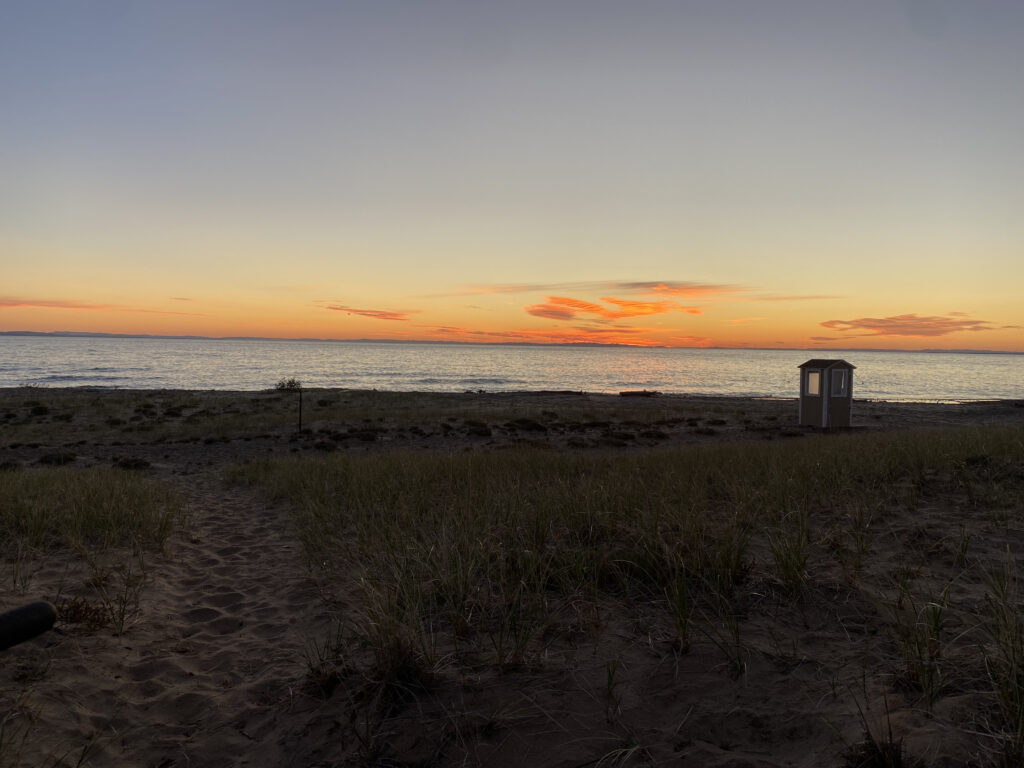
~Frank Fabbro, 2025 Fall Waterbird Counter
Featured Photo: Northern Lights display on the evening of 9/29
You can now see the waterbird count data on Trektellen! Check it out at trektellen.nl/count/view/4209.
You can keep up with the 2025 Fall Waterbird Count by reading Frank’s weekly blog posts and following WPBO’s social media (Facebook, Instagram, and X). The fall waterbird count runs August 15 through November 15.
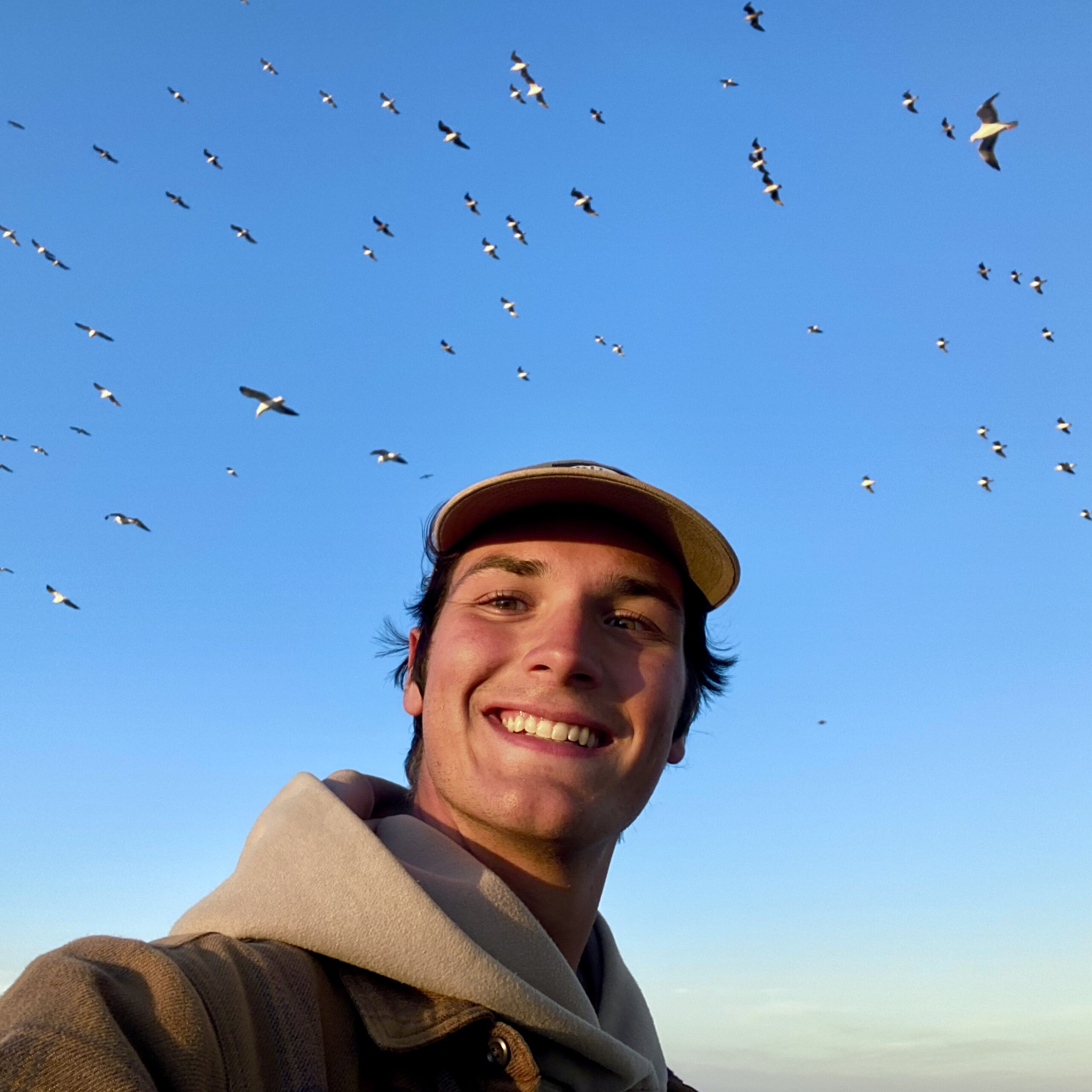
Frank Fabbro: 2025 Fall Waterbird Counter
Frank is an avid birder who was first introduced to the spectacle of bird migration along the Mississippi Flyway in his home state of Minnesota ten years ago. Since then, he has pursued his passion for birds, and the amazing places they inhabit, across the country and around the world. He studied Wildlife Biology and Landscape Restoration at the University of California, Davis, and since graduating has worked on a variety of bird-related projects, ranging from Spotted Owl surveys to prairie-chicken tagging and counting migrating seabirds. He’s excited to be back in the Northwoods, once again experiencing the excitement of fall migration along the shores of Lake Superior.

